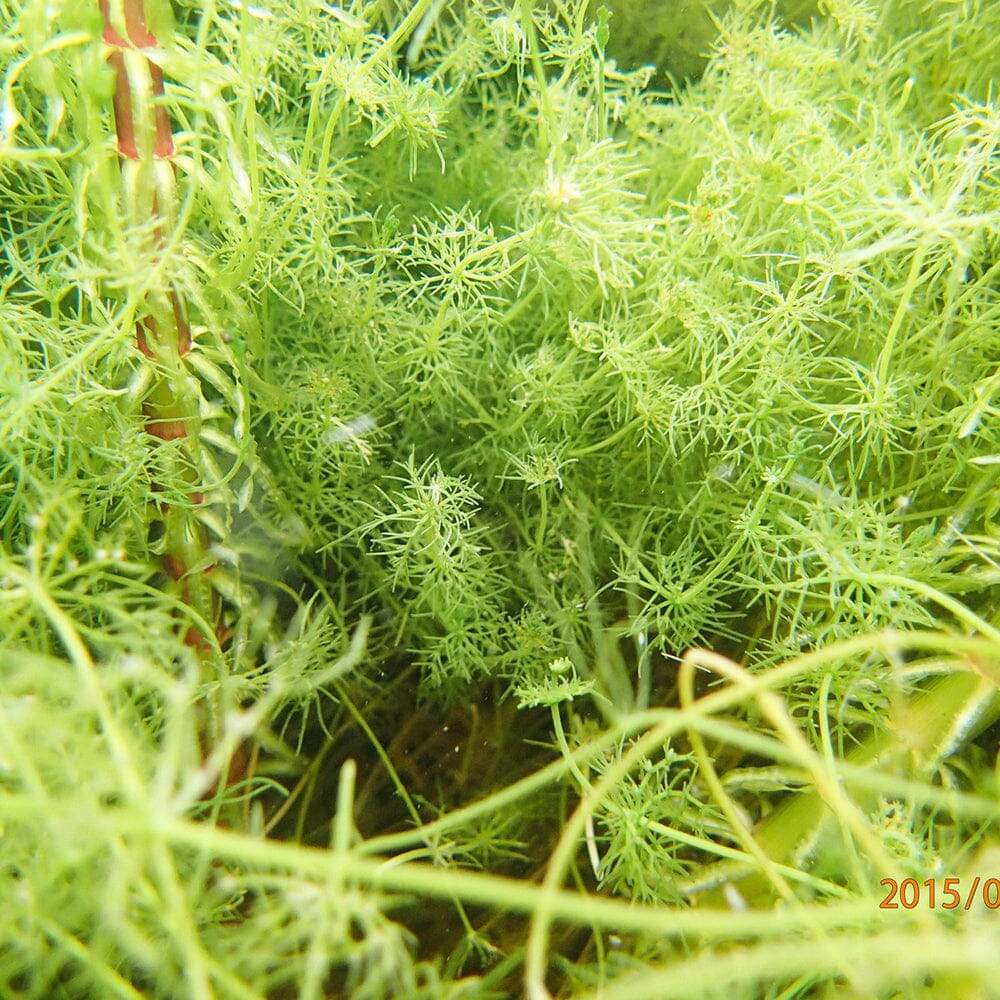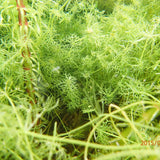Nitella Flexilis Aquatic Pond Plant - Stonewort
Nitella flexilis, commonly known as Flexible Hornwort, is a freshwater plant species that belongs to the Characeae family. Here is a detailed description and care guide for Nitella flexilis:
Description:
Nitella flexilis is an aquatic plant that is typically found in slow-moving or stagnant freshwater habitats such as ponds, lakes, and streams. It has a unique appearance with long, flexible, and branching stems. The stems can grow up to 60 cm (24 inches) in length and are covered in fine, thread-like branches. The plant is dark green in colour, and the branches have a delicate and feathery appearance. Nitella flexilis is a submerged plant, and it doesn't have true roots. Instead, it anchors itself to the substrate using rhizoids.
Care Guide:
Lighting: Nitella flexilis can tolerate a wide range of lighting conditions.
It can thrive in low to moderate light levels. If grown in an aquarium, provide 1-2 watts per gallon of full-spectrum light for optimal growth.
Water Parameters: Maintain a water temperature between 15-25°C (59-77°F). The pH level should be slightly acidic to neutral, ranging from 6.0-7.5. Nitella flexilis can tolerate a wide range of water hardness.
Substrate and Anchoring: Nitella flexilis can be anchored to the substrate or allowed to float freely in the water. If anchoring to the substrate, use a fine-grained substrate like sand or gravel. Ensure that the substrate is not too compact, as it can impede the growth of the plant.
Nutrient Requirements: Nitella flexilis can absorb nutrients directly from the water column but can benefit from supplemental fertilization. Regularly add a liquid fertilizer or root tabs rich in macro and micronutrients to support its growth.
Water Flow and Oxygenation:
Provide moderate water flow to prevent stagnation and promote oxygenation. This can be achieved through the use of a gentle water pump or by positioning the plant near the filter outlet.
Propagation: Nitella flexilis can propagate vegetatively through fragmentation. Simply divide healthy portions of the plant and replant them in the desired areas. Over time, new shoots will grow from the fragments, establishing new plants.
Compatibility:
Nitella flexilis is a versatile plant that can be used in various aquarium setups. It provides shelter and grazing areas for small fish and invertebrates. It can also serve as a nutrient absorber, helping to maintain water quality. Overall, Nitella flexilis (Flexible Hornwort) is a visually appealing and easy-to-care-for aquatic plant. It adds a natural and lush look to freshwater aquariums while providing additional benefits such as oxygenation and nutrient absorption. With proper care and suitable water conditions, Nitella flexilis can thrive and enhance the overall aesthetics of your aquatic environment.
Selection of Plants:
Choose appropriate oxygenating plants that are suitable for the size and depth of your pond. Common oxygenating plants include Hornwort (Ceratophyllum), Anacharis (Elodea canadensis), Waterweed (Elodea densa), and Watermilfoil (Myriophyllum species).
Placement:
Place oxygenating plants in the water at a depth where their foliage is fully submerged. Distribute the plants evenly throughout the pond, ensuring they receive adequate sunlight for photosynthesis.
Water Quality:
Oxygenating plants play a crucial role in maintaining good water quality by absorbing excess nutrients, competing with algae for resources, and releasing oxygen through photosynthesis. Regularly monitor water quality parameters such as pH, ammonia, nitrite, and nitrate levels to ensure they are within suitable ranges for the plants.
Nutrient Levels:
Oxygenating plants benefit from moderate nutrient levels in the water, but excessive nutrients can lead to rapid algae growth. Avoid over-fertilization or excessive organic matter accumulation in the pond, as it can negatively impact oxygenating plants.
Pruning and Maintenance:
Regularly thin out and prune oxygenating plants to prevent overcrowding and ensure healthy growth. Remove any dead or decaying plant material promptly to maintain water quality and prevent the release of excess nutrients.
Winter Care:
Some oxygenating plants may need special attention during winter, especially in colder climates. If your pond experiences freezing temperatures, consider moving potted plants indoors or provide insulation to protect them. In milder climates, oxygenating plants may continue to grow during winter, providing oxygen and supporting the pond ecosystem.
Propagation:
Some oxygenating plants can be propagated by dividing or taking cuttings. Follow specific instructions for each plant species to propagate them successfully and maintain a healthy population in your pond.
Monitoring and Control:
Regularly observe the growth and condition of oxygenating plants to identify any signs of disease, pests, or nutrient deficiencies. If needed, control excessive growth by removing excess plant material, but be careful not to remove too much at once, as it can disturb the pond's ecological balance.
Introduction of New Plants:
Before introducing new oxygenating plants into your pond, ensure they are free from pests, diseases, or invasive species. Avoid introducing non-native species that may become invasive and harm the local ecosystem. By following these general tips and care guidelines, you can maintain healthy oxygenating plants in your pond. They will contribute to the overall oxygenation of the water, provide habitat for beneficial organisms, and promote a thriving pond ecosystem.






























